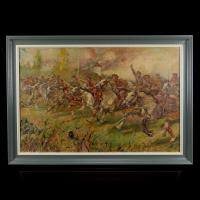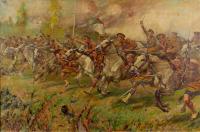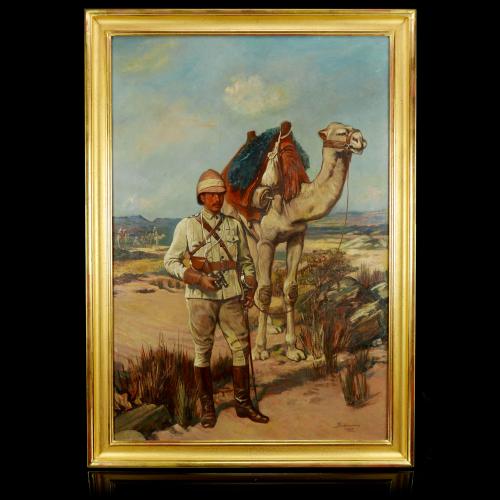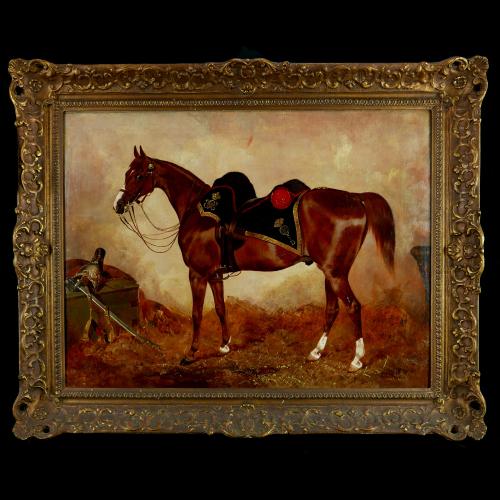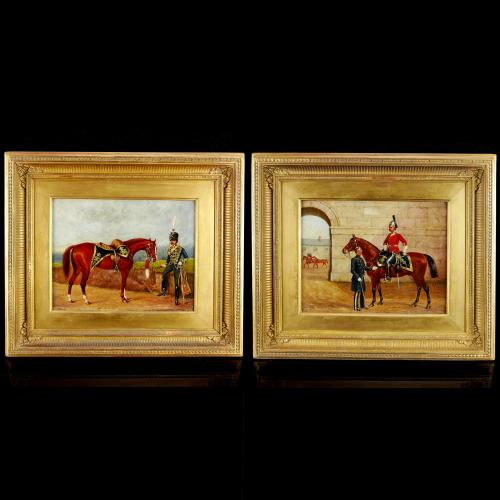
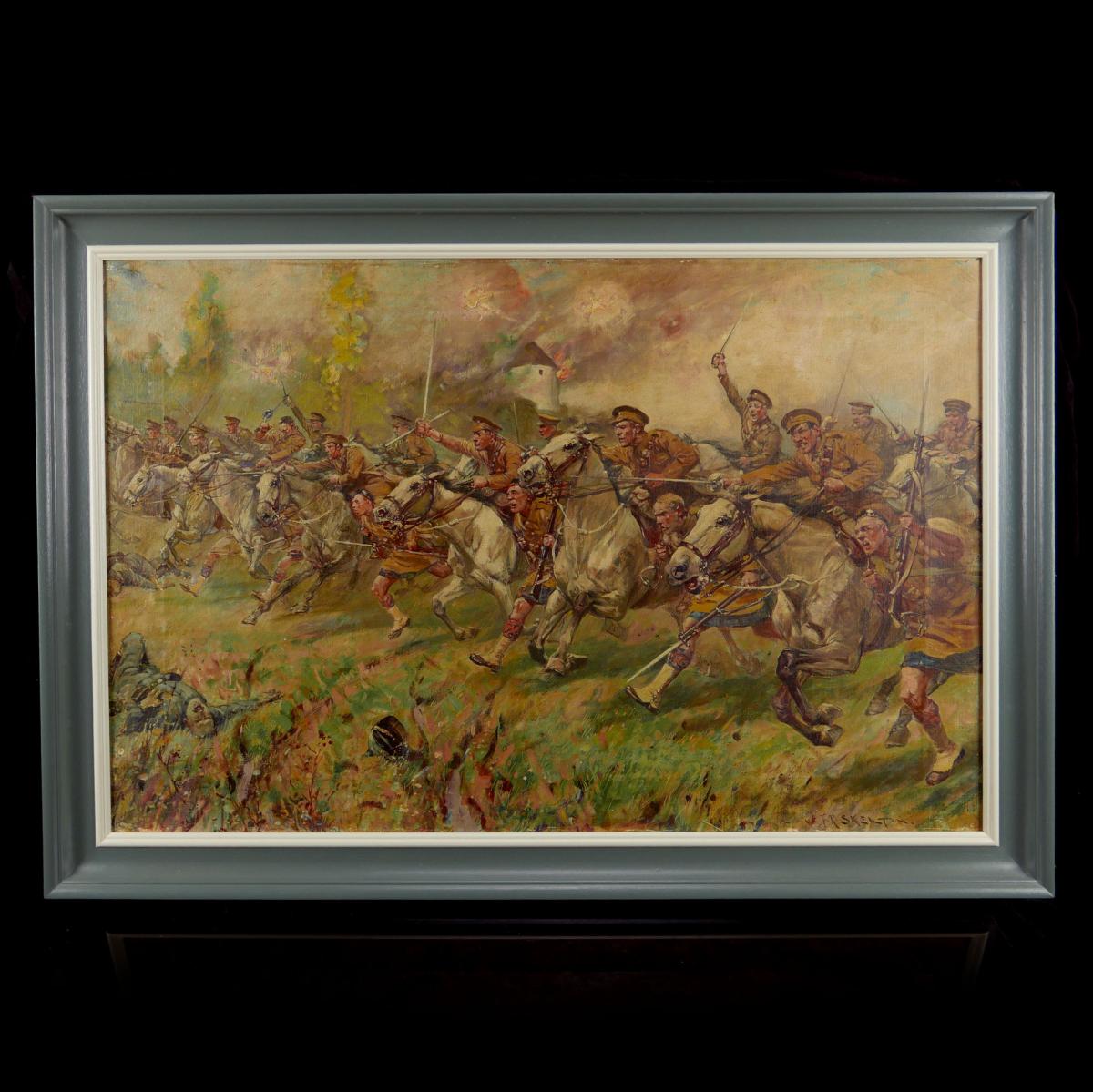
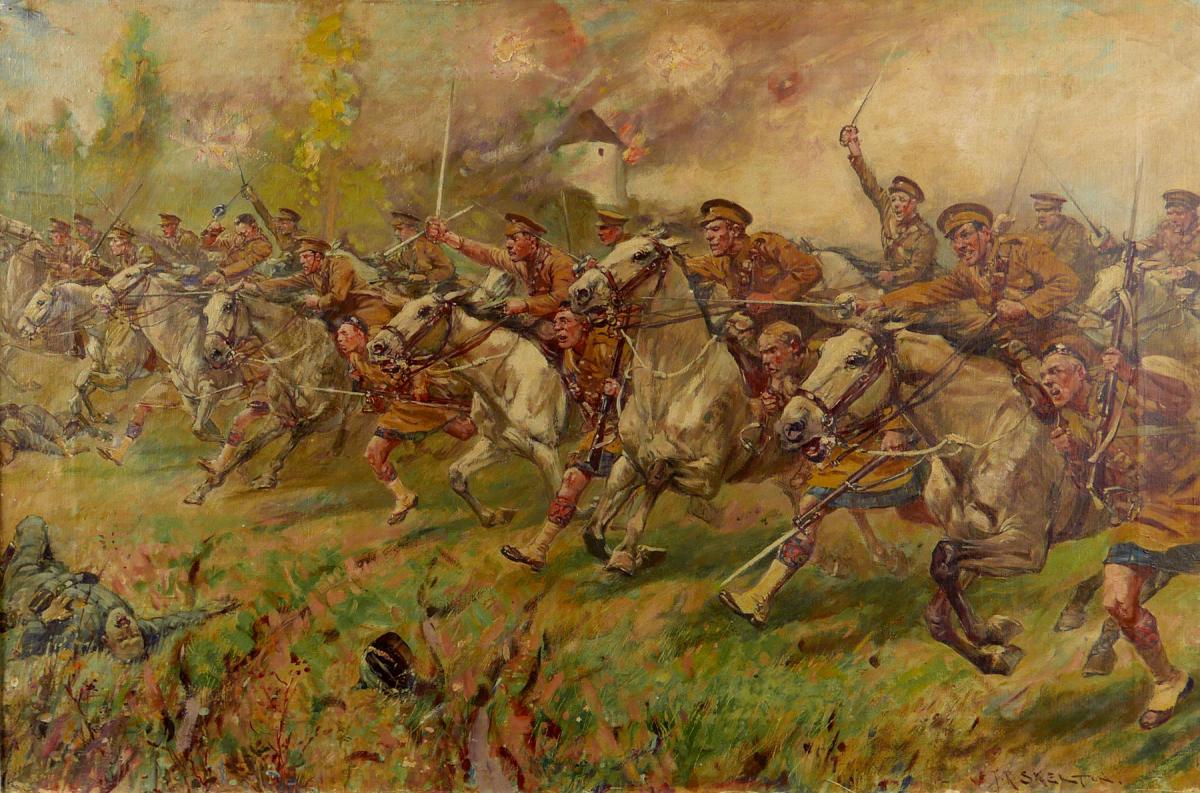
Price
£1850.00This object is eligible for a Certificate of BADA Provenance
The BADA Standard
- Since 1918, BADA has been the leading association for the antiques and fine art trade
- Members are elected for their knowledge, integrity and quality of stock
- Our clients are protected by BADA’s code of conduct
- Our dealers’ membership is reviewed and renewed annually
- Bada.org is a non-profit site: clients deal directly with members and they pay no hidden fees
Charge of the Scots Greys and the Black Watch at St Quentin (1914), 1917.
Overall: 60cm (23.6in) x 85cm (33.4in).
Oil on canvas. Signed and Inscribed ‘Charge of the Scots Greys and the Black Watch at St Quentin’ and dated ‘Jan 1917’ to the lower stretcher verso Canvas: 50.5cm (19.9in) x 76cm (29.9in).
This painting of a stirrup charge against the German foe was based on events that were alleged to have occurred at St Quentin, northern France in August 1914 during the British Expeditionary Force’s retreat from Mons. It relied on the collective memory of another military myth, the stirrup charge of the Scots Greys and Gordon Highlanders at the Battle of Waterloo (1815). On that occasion the highlanders are said to have grabbed the stirrup leathers of the Greys, as they manoeuvred to charge French infantry, and ran beside them shouting, "Scotland Forever!”. The unlikely event became deep-rooted in the Victorian public’s imagination through Lady Butler’s famous painting ‘Scotland Forever’, though no highland infantry were depicted.
In reality in August 1914 the 2nd Dragoons (Royal Scots Greys) operated on the extreme right of the BEF between Charleroi and Mons, near Binches on the Belgian border. They advanced for two days to the Mons-Conde Canal, and made their first contact with the enemy on 22 August. They subsequently held up a German cavalry division for several hours but the pressure was too great and the BEF was ordered to retreat. For almost two weeks the Greys fought, marched, and held the Germans at arm's length. On 28 August they joined the 12th Lancers and reportedly charged German cavalry at St Quentin, routing them during a wider action that would become known as the First Battle of Guise.
Amidst the dismal reports of the Retreat from Mons, the charge of the Scots Greys stood out as one of the few positive stories and was enthusiastically reported in Illustrated London News on 12 September 1914 and in many provincial newspapers over the ensuing weeks. It stirred Countess Feodora Gleichen RA (1861-1922) to sculpt and cast an equestrian group depicting a mounted Scots Greys trooper charging with a running highlander at his side. Copies of the bronze were sold in aid of the Prince of Wales's Fund for he relief of Soldiers' and Sailors' Families.
The artist responsible for the present work, Joseph Ratcliffe Skelton (1865–1927) aka J. R. Skelton, was a prolific illustrator. He was a professional photographer and was active as an artist from the late 1880s, working in London. He painted figures, illustrations, and genre scenes. His paintings were exhibited in the Royal Academy, the Royal Institute of Oil Painters, and the Royal Institute of Painters in Watercolours. He was a member of the Royal West of England Academy.
The BADA Standard
- Since 1918, BADA has been the leading association for the antiques and fine art trade
- Members are elected for their knowledge, integrity and quality of stock
- Our clients are protected by BADA’s code of conduct
- Our dealers’ membership is reviewed and renewed annually
- Bada.org is a non-profit site: clients deal directly with members and they pay no hidden fees


